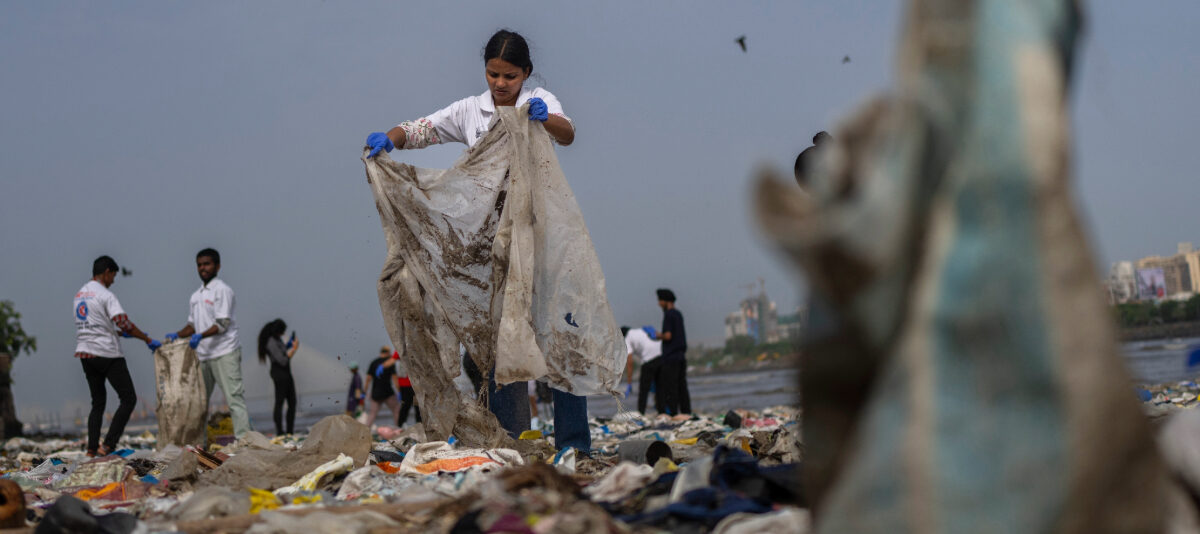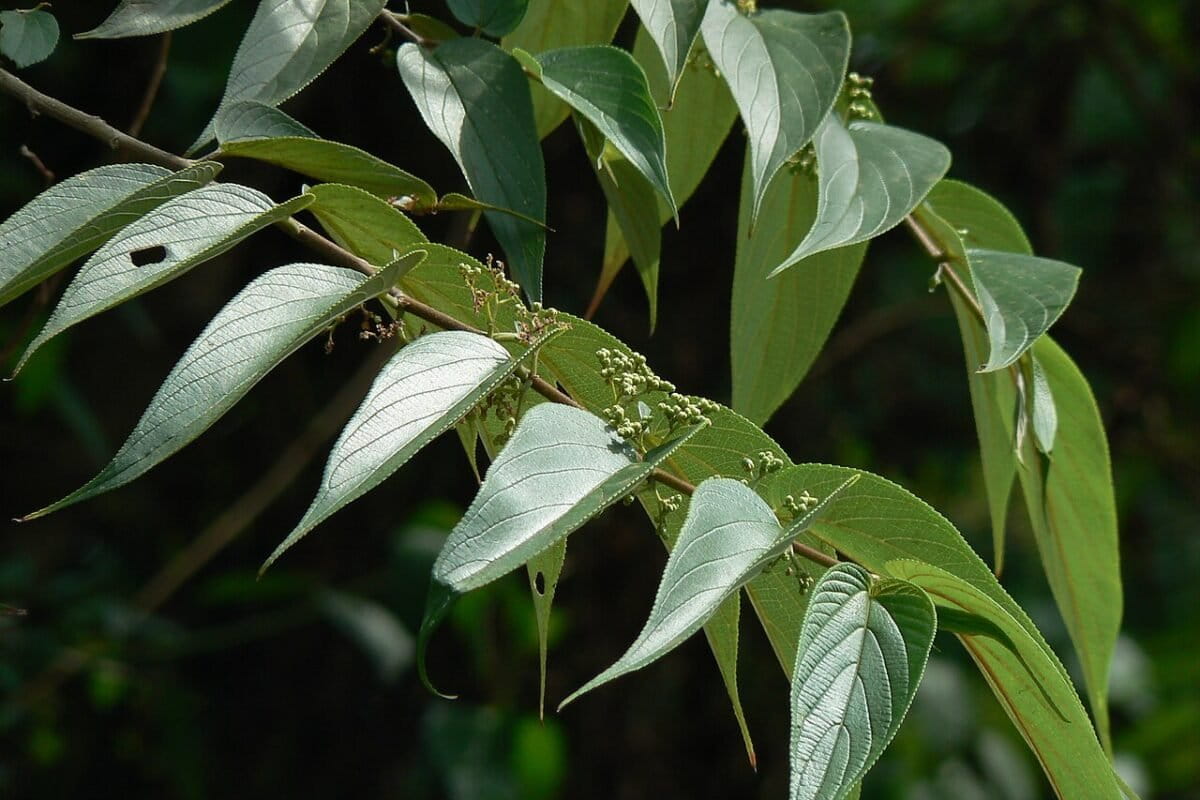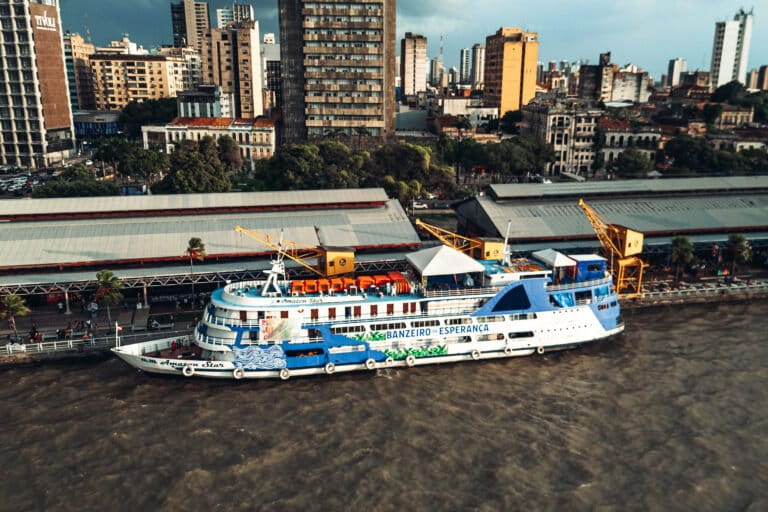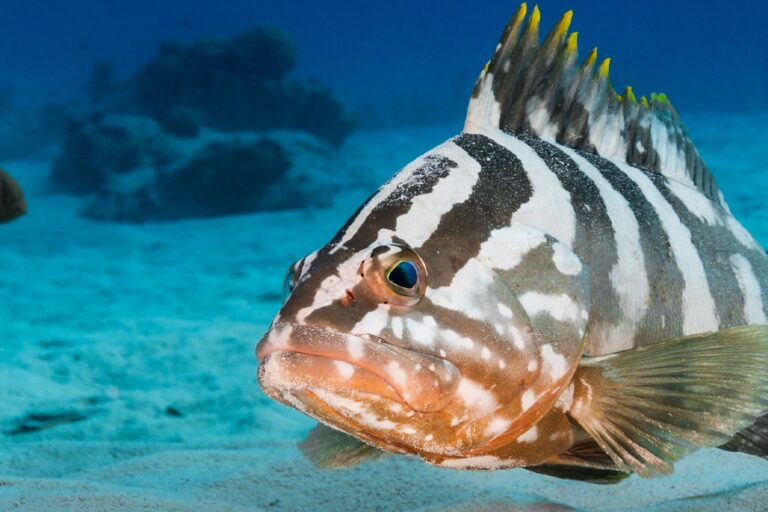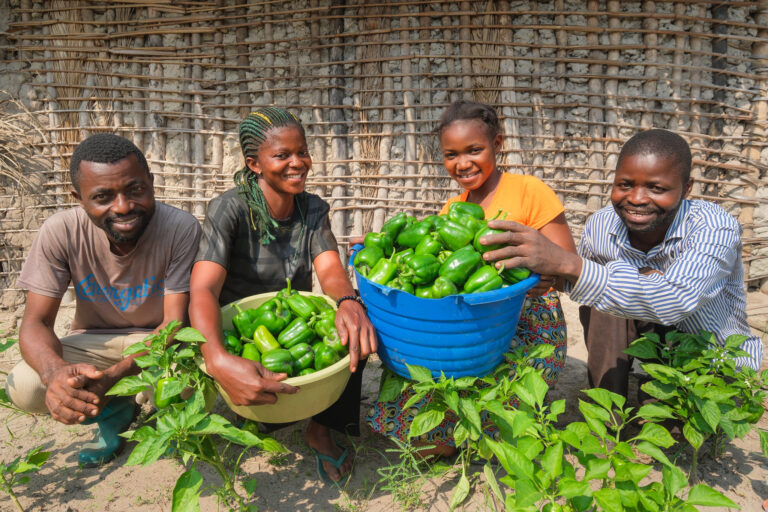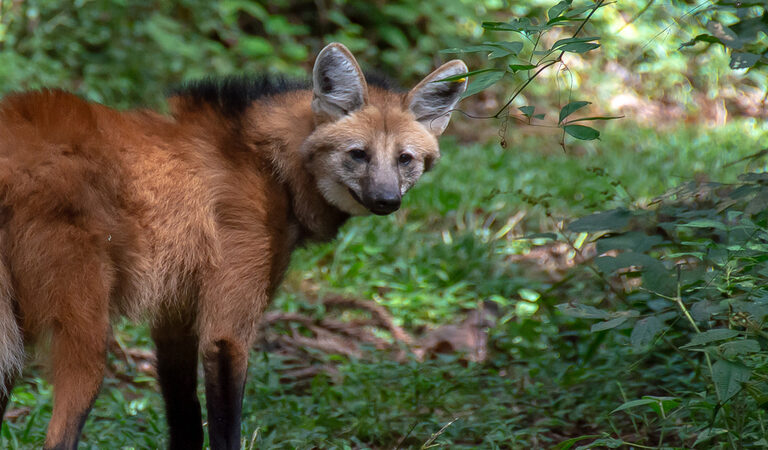- Camera traps are widely used to monitor biodiversity and guide conservation actions, but a first-of-its-kind study finds the technology isn’t as prevalent in highly biodiverse areas that face the most threats from human activities, such as the Congo Basin and the Amazon Rainforest.
- Even in areas with a high number of camera-trap studies, nearly two-thirds were conducted outside the regions facing the highest risk of animal extinctions.
- Country income, accessibility, mammal diversity and biome largely determine the locations of nearly two-thirds of camera-trap research.
- Experts suggest expanding the network of camera-trap studies, building capacity among local research communities, and leveraging tools and platforms that help with data sharing and analysis to address these disparities.
Over the past three decades, camera traps have given us a rare, never-before-seen peek into animal lives. Used by conservation organizations, academic researchers and citizen science projects around the world, camera traps have become the gold standard in monitoring biodiversity and studying cryptic and elusive species in the wild. However, a first-of-its-kind study published in the journal Remote Sensing in Ecology and Conservation finds that camera traps remain missing from areas that could really use them.
“You can think of a camera trap as an automatic and restless field assistant that sits in the field, rain or shine, day or night, [and] just captures [images or videos of] whatever walks in front of it,” says Jorge Ahumada, a tropical biologist who leads the largest camera trapping platform in the world, called Wildlife Insights. “It’s just collecting a lot of information in a standardized way, which will not be possible by humans.”
With the planet’s biodiversity declining rapidly due to human activities — from poaching and agricultural expansion, to road construction and mining — data from camera traps can help conservationists keep a pulse on the health, numbers and behaviors of different wildlife species. It can also tell us if specific conservation actions are actually working.
All that’s true if we deploy camera traps in the right places: biodiversity hotspots that face the highest threats. However, the new study found a massive disparity between locations of camera trap studies and regions with the highest risk of mammalian extinction, such as the Congo Basin and the Amazon Rainforest.
“We show that camera trap research in the last two decades did not actually track areas where defaunation [loss of wildlife] was happening,” says study co-author Badru Mugerwa from the Leibniz Institute for Zoo and Wildlife Research, Germany. Instead, the researchers found that country income, accessibility, richness of mammalian species, and the type of biome determined the location of such studies.
Ahumada, who was not involved in the study, says he’s not surprised by the findings.
“I think it is fair to say that we need more camera traps proportionally to areas with higher biodiversity,” he says. “The study is a good first start to look at relationships between the production of science in different parts of the world and factors that affect that [process].”


Worldwide disparities in camera trapping
The researchers sifted through scientific studies and so-called gray literature — reports, working papers, government documents and others — published between 2000 and 2019 targeting terrestrial mammals. They then selected a subset of studies containing the keywords “camera trap,” “remote camera” or “photo trap,” and zeroed in on 2,300 studies. From these, they manually extracted the GPS coordinates and mapped them for each study. The researchers also identified 10 predictors to determine which affected the location of camera traps. These included country income, forest loss, biomes, ruggedness of the terrain, and protected areas as defined by the IUCN, the global wildlife conservation authority.
“What really jumped out from this research is that some of the areas that are currently being hammered by human activities — the Amazon and the Congo basins — received the least amount of camera-trap research in the past two decades,” Mugerwa says. “There is something wrong going on here.”
Even in geographies where camera-trap studies have increased in the past two decades, such as Southeast Asia and India, nearly two-thirds (64.2%) of those were conducted outside areas with the highest animal extinction risks.
Most camera-trap studies were in tropical and subtropical moist forests, followed by temperate forests, tropical grasslands, and Mediterranean biomes. The highest density of camera traps was in mangroves, while the lowest was in boreal forests and the tundra biome.
Among 130 countries with camera-trap studies, high-income and upper-middle-income countries bagged the lion’s share. Countries such as the U.S., Brazil, Australia, India, Mexico and China topped the list with the most research locations. In contrast, African nations such as Mauritania, the Democratic Republic of Congo, Niger and Angola lagged with fewer than five studies each.
Data also indicated that camera-trap studies were most likely to be conducted in North America, continental Europe, the U.K. and Japan, while African countries had some of the lowest chances.

Disparities due to lack of funds and capacity
The researchers say these disparities stem from the lack of research funding in low-income countries. “Research is expensive,” Mugerwa says, adding that camera taps, which can cost around $150 to $200, can be prohibitive for scientists in these countries, who often operate on shoestring budgets. They also need a research structure that can standardize data collection and analyze the data to inform policy decisions.
“It’s not just buying the cameras — there’s no shop in DRC where you can buy these cameras. You need to bring them from Europe or the U.S. or somewhere,” says ecologist Aida Cuni-Sanchez from the Norwegian University of Life Sciences, who studies tropical forests in West Africa, the Congo Basin and East Africa and uses camera traps for her work. “You need the batteries [and] then you need the facilities to store the data, download it, analyze it. Some of these areas don’t even have good internet network or electricity.”
The lack of camera traps in low-income countries also limits local communities’ opportunity to train and build the capacity to start and manage camera-trap projects independently, thus forcing them to depend on analysis and insights from scientists in the Global North. As a result, when key actionable information collected through camera traps is unavailable — either due to country regulations that prevent researchers from sharing sensitive biodiversity data or the inability to process and analyze the collected data locally — it can negatively impact local conservation efforts.
Cuni-Sanchez highlights another challenge in the Congo Basin: conflict.
“Many of the Congo Basin countries have little capacity or funding to do [camera-trap research] themselves, but it also has a history of conflict,” she says, adding that it’s difficult for researchers to do their fieldwork when a country is at war. For example, she says, “few people work in the Central African Republic,” currently mired in civil war since 2012.
“Scientific collaboration often disproportionately favors wealthier countries,” says ecologist Helena Aguiar-Silva from Brazil’s National Institute of Amazonian Research (INPA), who studies harpy eagles using camera traps. However, she says the gap concerning camera-trap research is narrowing, pointing to recent data from the Amazon and the Atlantic Forest published in 2022 and 2024.
Mugerwa and his colleagues’ analysis wouldn’t have captured them as it considered studies published until 2019. “Five years can make a significant difference in the quantity of studies being conducted and published,” says Aguiar-Silva, who wasn’t involved in this study.
In the Congo Basin, the number of camera trap studies has increased slightly in recent years, according to Cuni-Sanchez, “but I don’t think it would be a lot because of challenges.” She adds that most are focused on national parks and other protected areas, where researchers have help from park officials. A 2022 study found a steady increase in camera-trap research in Africa, but most were conducted in Southern Africa and East Africa.


Addressing disparities and benefiting conservation
A straightforward way to address the disparities, researchers say, is by expanding camera-trap studies into areas where they’re currently lacking, such as the Congo and Amazon basins. However, Mugerwa cautions against doing so through “helicopter research,” the practice of researchers from the Global North going to countries in the Global South for research but leaving without training the local researchers or benefiting communities.
“Expanding camera traps in these areas without building capacity for people to conduct surveys — I don’t think that would solve the problem,” he says.
Aguiar-Silva agrees: “When researchers from high-income countries come to low-income countries, they often only build the capacity to collect data in the field and not to analyze and publish it.” Instead, she suggests that researchers from high-income countries with funds work with local researchers to design ecological questions that best answer local concerns and priorities and share data and analysis.
“By empowering local researchers with comprehensive skills, collaborations can yield more equitable and impactful outcomes in biodiversity conservation and beyond,” she says, recommending that researchers follow the Cape Town Statement, which advocates fairness, equity and diversity in research.
“Short-term capacity-building courses are not enough,” Cuni-Sanchez says, adding that such collaborations must involve long-term mentorship and trust building and not just training to collect data. She also warns against the push to make such data public, calling it “disempowering” to the local researchers. Without the skills to analyze the data collected, the power to voice their views or the money to buy expensive software, the only thing researchers from the Global South have is data. “So, making the data open to me is stealing from them because now they will never be involved in the publications that come out because it’s open and anybody can use it.”
Ahumada says the Wildlife Insights model and similar ones coming up are trying to address the capacity-building challenges by democratizing the data collected and shared on the platform and providing researchers with tools to analyze their own data.
“A big part of where conservation starts is at the local scale, and right now people don’t have the tools,” he says, “This kind of revolution of platforms, data and tools is ultimately going to help everybody, but most importantly, the communities that have not been benefited traditionally.”
Banner image: Camera trap training in the DRC. Image by Axel Fassio/CIFOR-ICRAF via Flickr (CC BY-NC-ND 2.0).
See also from our conservation technology series:
Camera-trap study brings the lesula, Congo’s cryptic monkey, into focus
Citations:
Mugerwa, B., Niedballa, J., Planillo, A., Sheil, D., Kramer‐Schadt, S., & Wilting, A. (2023). Global disparity of camera trap research allocation and defaunation risk of terrestrial mammals. Remote Sensing in Ecology and Conservation, 10(1), 121-136. doi:10.1002/rse2.360
Antunes, A. C., Montanarin, A., Gräbin, D. M., Monteiro, E. C. D. S., De Pinho, F. F., Alvarenga, G. C., … Ribeiro, M. C. (2022). AMAZONIA CAMTRAP: A data set of mammal, bird, and reptile species recorded with camera traps in the Amazon forest. Ecology, 103(9). doi:10.1002/ecy.3738
Franceschi, I. C., Da Paixão Dornas, R. A., Lermen, I. S., Coelho, A. V. P., Boas, A. H. V., Chiarello, A. G., … Coelho, I. P. (2024). Camera trap surveys of Atlantic Forest mammals: A data set for analyses considering imperfect detection (2004-2020). Ecology, 105(5). doi:10.1002/ecy.4298
Bessone, M., Kühl, H. S., Hohmann, G., Herbinger, I., N’Goran, K. P., Asanzi, P., … Fruth, B. (2020). Drawn out of the shadows: Surveying secretive forest species with camera trap distance sampling. Journal of Applied Ecology, 57(5), 963-974. doi:10.1111/1365-2664.13602
Cordier, C. P., Ehlers Smith, D. A., Ehlers Smith, Y., & Downs, C. T. (2022). Camera trap research in Africa: A systematic review to show trends in wildlife monitoring and its value as a research tool. Global Ecology and Conservation, 40, e02326. doi:10.1016/j.gecco.2022.e02326



